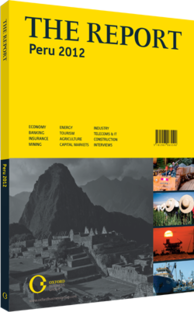A capital overhaul: New projects to upgrade Lima’s public transport network
After more than two decades of planning, preparations and delays, the first line of Lima’s new metro system opened on January 3, 2012. The metro will have a major impact in terms of alleviating the capital’s congested transport network. Lima has been fighting a losing battle against gridlock, pollution and traffic accidents for decades, but it appears the city is turning the corner.
The concept of a metro system began during the first term of former President Alan García in 1986. A series of delays due to economic and political instability forced the project into hibernation for the better part of 20 years, with only 9 km completed. It was not until García returned for a second term in 2006 that the system took on a new lease on life, largely thanks to a $300m loan from the Andean Development Corporation.
A SYSTEM IN THE WORKS: Commuters took an inaugural ride on the 22-km line on January 6, 2012. The 16-station route runs from the southern neighbourhood of Villa El Salvador to the city centre. There are plans to establish a five-line urban network, with the next four lines expected to be complete by 2025.
Line 1, which presently operates with only five trains, is set to receive another 19 worth $130m from France’s Alstom in 2013. The line is also to be extended 12.4 km to San Juan de Lurigancho in 2012, and will cover 34.5 km, with 26 stations and 24 trains when complete.
The Autonomous Authority of Mass Transit for Lima and Callao (Autoridad Autónoma del Sistema Elé ctrico de Transporte Masivo de Lima y Callao, AATE), formed in 1986, is the government agency responsible for the oversight of the metro system. In January 2012 the AATE suggested it is feasible to construct lines 2, 3, 4 and 5 of the metro underground. This was followed by the February announcement that a technical assessment for the construction of the 30-km second metro line would be carried out in 2012. Initial government estimates indicate the underground construction of the network’s second line will cost somewhere in the region of $2bn. The total cost of Line 1 was said to be around $520m, which was more than 20% over the budget.
However, Lima’s new metro will not solve all the city’s problems. Its population of 8m stretches extensively along its Pacific coastline and its sprawling nature has necessitated a variety of transportation solutions, some better than others. One successful solution recently implemented by Lima’s former mayor, Luis Castañeda, is a 28-km, 38-station high-speed bus lane running straight through the heart of the city.
GRIDLOCK RELIEF: Whereas dedicated high-speed bus lanes are cheaper to construct and maintain, they suffer from a lack of efficiency and capacity in comparison to a modern metro system. The city perhaps needs both forms of public transportation, as each has advantages, depending on the needs of a given route. Stricter regulations on private sector taxis and minibuses will also help relieve the capital’s current gridlock.
Indeed, Lima’s infamous minibuses run riot all over the city, stopping at will to pick up and drop off passengers. Additionally, taxi fares must be negotiated due to a lack of metered taxis, and generally poor vehicle conditions emit large volumes of pollution as they manoeuvre towards their next stop.
LAYING DOWN THE LAW: The deployment of a larger, more vigilant metropolitan traffic police force has started to crack down on unlicensed and/or uninspected private taxis and minibuses. Structural changes, such as establishing dedicated taxi and bus lanes with defined stopping points and more stringent regulations on private sector vehicle inspections, may be expensive and provide a short-term nuisance, but will benefit Lima’s transportation network in the long term.
While chronic congestion is not likely to retreat due to the opening of one metro line, it undoubtedly signifies a step in the right direction. As new stations and metro lines continue to open over the next decade, a more precise impact will indeed be gauged. If the city can simultaneously work with the private sector in restructuring and regulating its current taxi and minibus system, Lima should have no difficulty in boosting the image of the capital’s public transportation network.
You have reached the limit of premium articles you can view for free.
Choose from the options below to purchase print or digital editions of our Reports. You can also purchase a website subscription giving you unlimited access to all of our Reports online for 12 months.
If you have already purchased this Report or have a website subscription, please login to continue.

